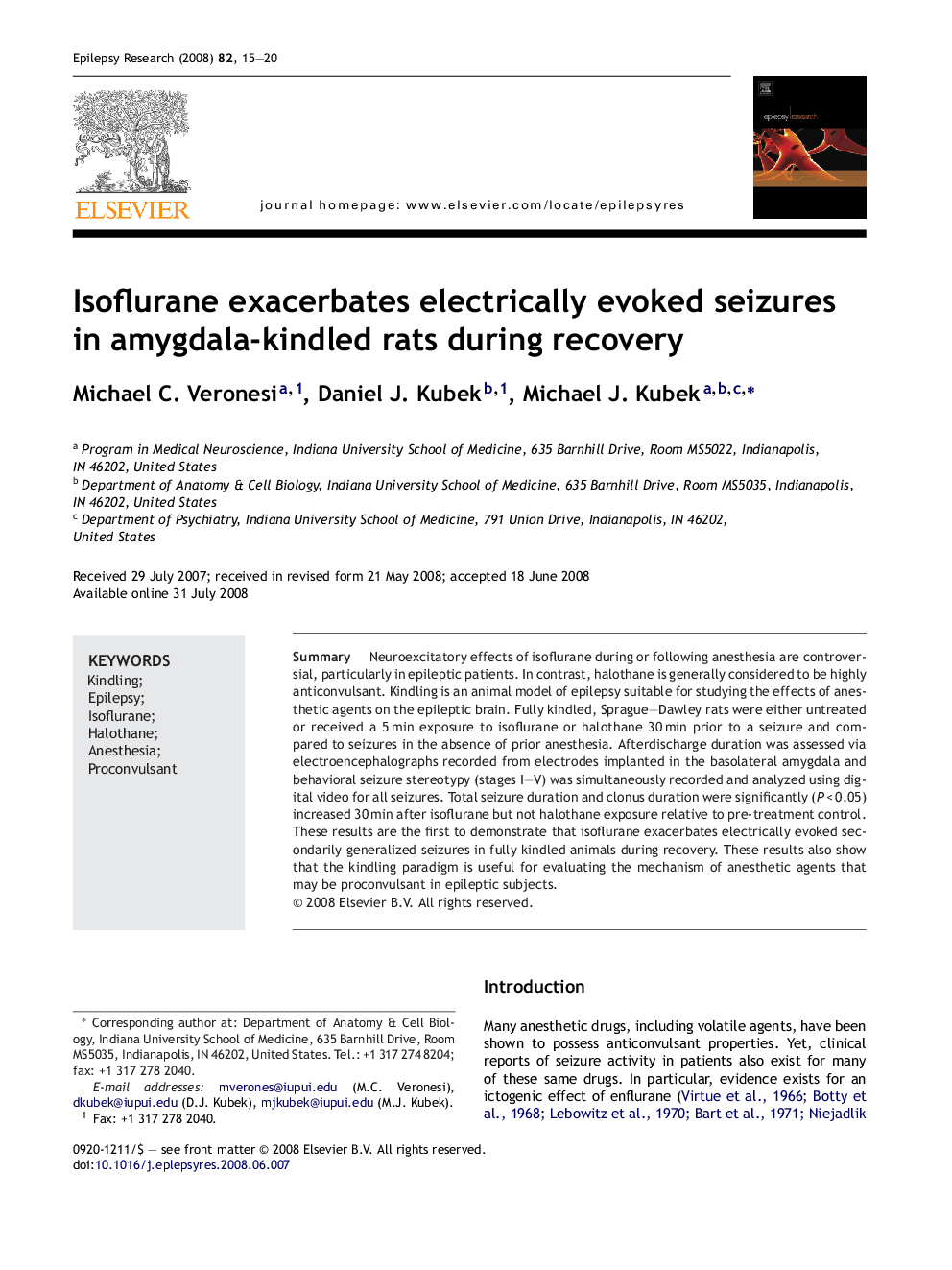| Article ID | Journal | Published Year | Pages | File Type |
|---|---|---|---|---|
| 3052919 | Epilepsy Research | 2008 | 6 Pages |
SummaryNeuroexcitatory effects of isoflurane during or following anesthesia are controversial, particularly in epileptic patients. In contrast, halothane is generally considered to be highly anticonvulsant. Kindling is an animal model of epilepsy suitable for studying the effects of anesthetic agents on the epileptic brain. Fully kindled, Sprague–Dawley rats were either untreated or received a 5 min exposure to isoflurane or halothane 30 min prior to a seizure and compared to seizures in the absence of prior anesthesia. Afterdischarge duration was assessed via electroencephalographs recorded from electrodes implanted in the basolateral amygdala and behavioral seizure stereotypy (stages I–V) was simultaneously recorded and analyzed using digital video for all seizures. Total seizure duration and clonus duration were significantly (P < 0.05) increased 30 min after isoflurane but not halothane exposure relative to pre-treatment control. These results are the first to demonstrate that isoflurane exacerbates electrically evoked secondarily generalized seizures in fully kindled animals during recovery. These results also show that the kindling paradigm is useful for evaluating the mechanism of anesthetic agents that may be proconvulsant in epileptic subjects.
